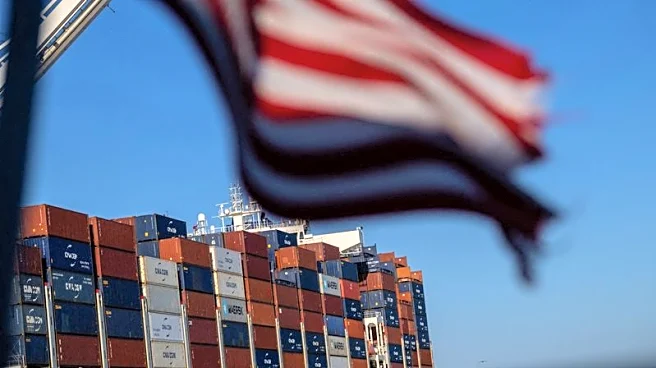What's Happening?
Retailers are gearing up for the back-to-school shopping season, which is the second-largest retail event after the year-end holidays. This year, tariffs have increased supplier prices, affecting the cost
of items like sketchbooks, which have risen by 25%. Retailers are responding by stocking up early and adjusting assortments to manage these price hikes. The National Retail Federation reports that 91% of shoppers expect prices to rise due to tariffs. Despite these challenges, spending is expected to remain strong, with US parents planning to spend an average of $570 per child, similar to last year. Retailers are also leveraging social media and AI to enhance shopping experiences, with generative AI traffic to retail sites growing significantly.
Why It's Important?
The back-to-school shopping season is crucial for retailers, generating billions in sales annually. The impact of tariffs on prices could affect consumer spending patterns, potentially leading to increased demand for promotions and discounts. Retailers that effectively manage inventory and leverage technology for personalized shopping experiences may gain a competitive edge. The use of AI and social media in retail strategies highlights the shift towards digital and omnichannel shopping experiences, which are becoming increasingly important in attracting and retaining customers.
What's Next?
Retailers are expected to continue adapting their strategies to manage tariff impacts and meet consumer demand. This includes offering promotions for price-sensitive shoppers and simplifying the shopping experience to reduce cart abandonment rates. The focus on convenience, such as buy online, pick up in-store options, is likely to grow as families prioritize ease of shopping. Retailers may also explore partnerships with influencers and user-generated content creators to build trust and credibility with their target audience.
Beyond the Headlines
The rise in tariffs and their impact on back-to-school shopping could have broader implications for retail pricing strategies and consumer behavior. As families seek to stretch their budgets, there may be increased interest in secondhand and refurbished goods, which could shift traditional retail dynamics. The integration of AI in retail could also lead to more personalized and efficient shopping experiences, potentially reshaping consumer expectations and industry standards.













